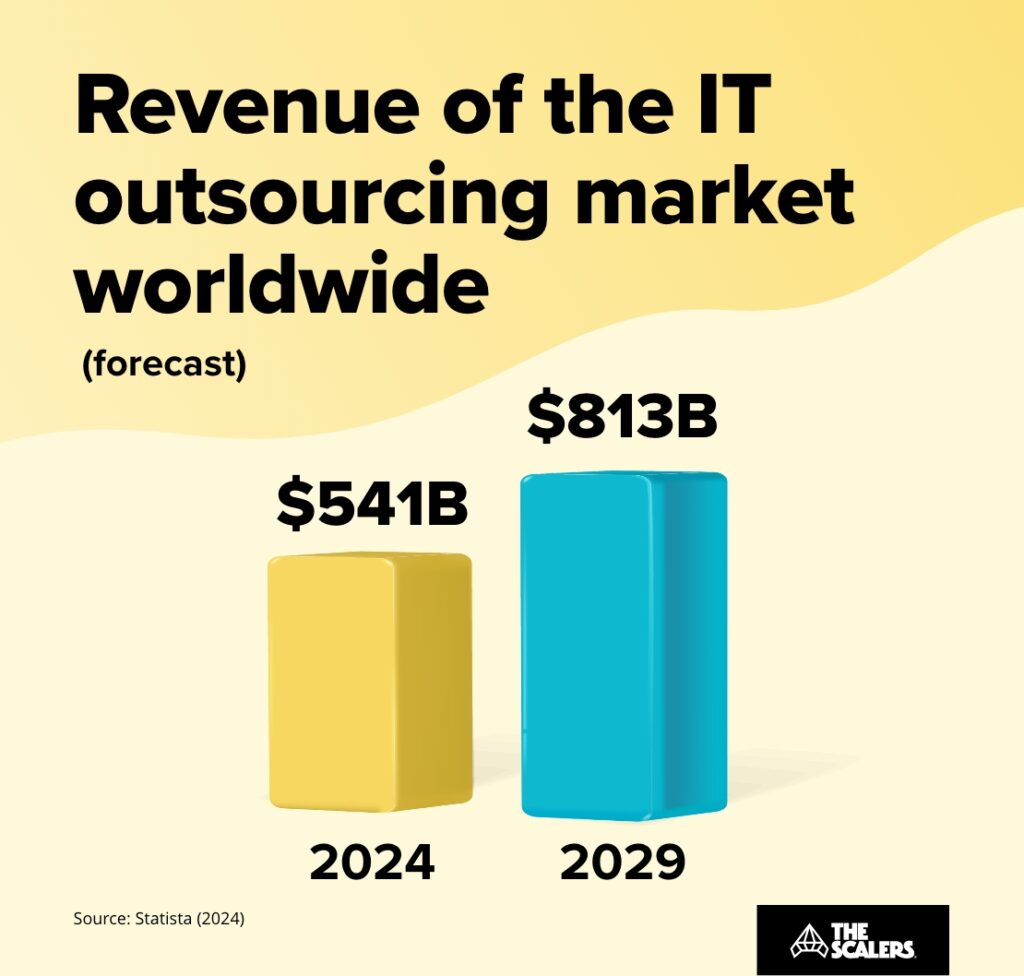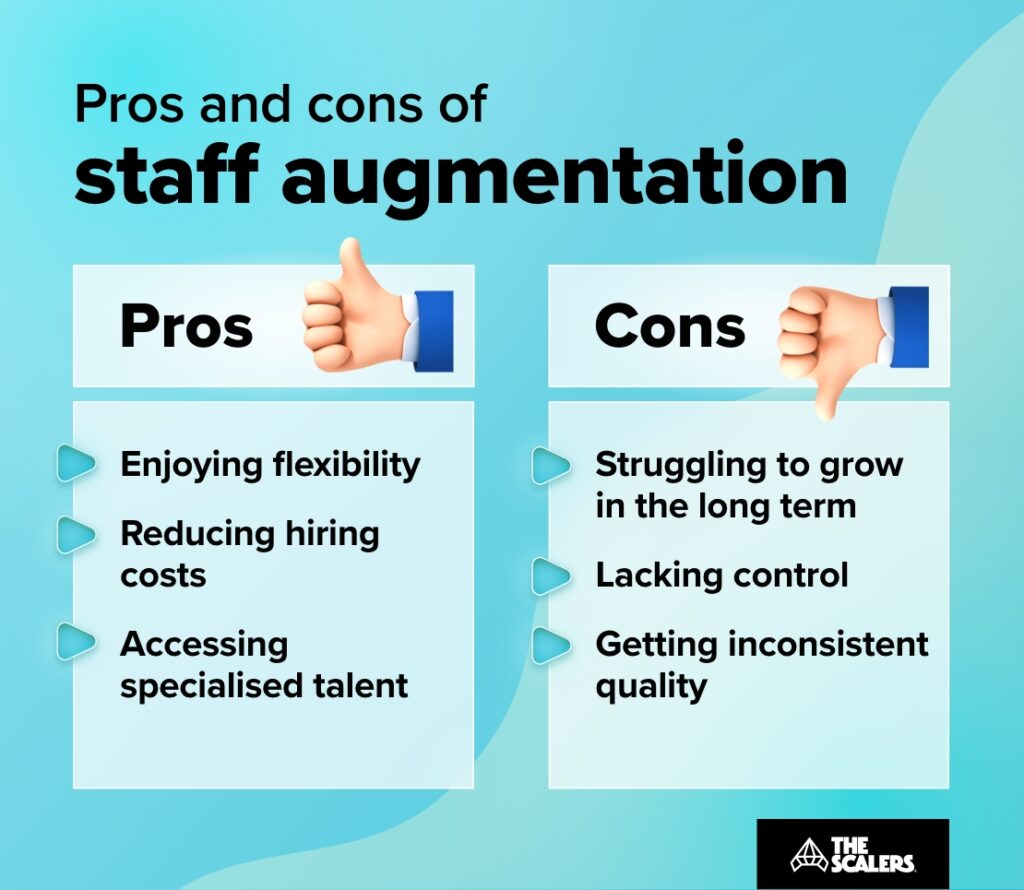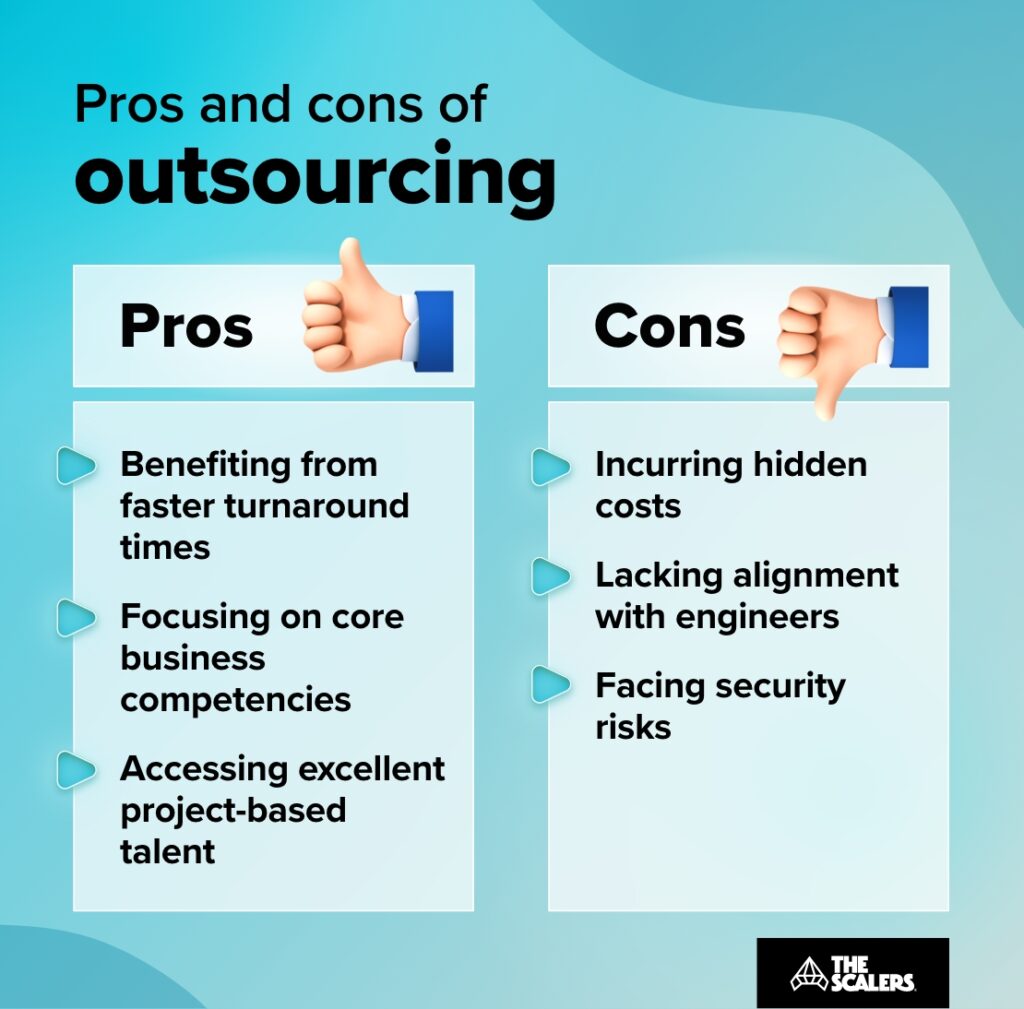Staff augmentation vs outsourcing: what’s the best fit for you?

You want to find qualified tech talent overseas but don’t know where and how to start. You’ve heard organisations having great experiences outsourcing engineers… and others getting not-so-good results.
Then there’s staff augmentation, another popular model for hiring developers many businesses use to expand their teams. “Maybe this could work for us,” you may have thought while exploring solutions for finding professionals you can’t get at home.
But do you (really) know what these business processes are and how they can benefit you? Can you identify the key differences between them?
In this article, we compare staff augmentation vs outsourcing, analyse their pros and cons, and teach you how to make the right choice. We also reveal a unique and proven IT staff augmentation model that has helped multiple companies extend development teams on demand.
Let’s start!
What’s the difference between staff augmentation and IT outsourcing?
To better understand the difference between staff augmentation and outsourcing, let’s start by defining both terms.
Staff augmentation is a model organisations use to hire temporary help to meet sudden demand. For example, a tech company hires additional developers to complete a critical project on time.
Outsourcing means delegating a function or a process to a third party, usually located in a foreign country. For example, a US-based business outsources its IT support services to a tech team in Pakistan.
While these two models look quite similar — they’re often mixed up and used interchangeably — they hold a major difference regarding the level of control and accountability the contracting firm retains.
With staff augmentation, the employer controls and manages the project, with the temporary staff working as part of their existing team. In contrast, with outsourcing, the vendor generally oversees and delivers the project using their own processes and methods.

Staff augmentation pros and cons
Before making a decision between staff augmentation and outsourcing, you may want to explore the advantages and disadvantages of both models.
These are the main pros and cons of staff augmentation:

Pros
- Enjoying flexibility: Staff augmentation allows you to add more engineers to your team whenever you need it with the utmost flexibility. That’s a plus if all you require is one-off support for a particular project.
- Reducing costs: You’ll undoubtedly save money by augmenting your team with external professionals, especially if your organisation is based in a Western country. For instance, the median annual salary for a US software engineer is $179,000, compared to $31,000 in India. Besides compensation, you’ll reduce costs because you won’t need to spend on infrastructure, training or onboarding. With staff augmentation, you just hire experts to complete a task.
- Accessing specialised talent: If you can’t find the talent you need for a short-term assignment, staff augmentation sounds about right for your company. With this model, you can hire engineers specialised in the programming languages and industries you need.
Cons
- Struggling to grow in the long term: This model isn’t for you if you want to build a dedicated tech team that grows at the same pace as your business. For that purpose, offshoring is a better solution. In comparing staff augmentation vs offshore development, the latter wins regarding long-term growth. Remember that with staff augmentation you’re hiring short-term external help, not engineers who are 100% committed to your organisation.
- Lacking control: Although the engineers you hire temporarily work as part of your team, their time may be divided among other commitments. You might not consistently work with the same individual, and you may need to spend time reeducating new team members.
- Getting inconsistent quality: You know better than most that a development team relies on consistent standards and practices. What if your augmented engineers don’t adhere to these standards? What if their work doesn’t align with your team’s established processes? As you work with different employees every time, you have to train them in your ways of working, and they might not fully understand your product. This can lead to potential misalignment and inconsistency in the quality of work delivered.

Discover how to scale development teams in 2023 and beyond
DOWNLOAD EBOOKOutsourcing pros and cons
Do you think outsourcing better fits your business than staff augmentation? Here’s a list of the pros and cons of this popular model.
To make it as authentic as possible, we’ve drawn from the experiences of our partners who had previously suffered subpar experiences with outsourcing vendors.
For example, Preqin, a UK FinTech that had previously outsourced before contacting us to offshore software development and expand their engineering capacity.

Pros
- Benefiting from faster turnaround times: Outsourcing partners often have established processes and deep expertise in specific deliverables, such as mobile apps, websites, integrations, and data dashboards. This specialisation enables them to complete projects quickly. Plus, they can allocate more resources to your project for a limited time and reassign it once it is completed, ensuring faster turnaround times.
- Focusing on core business competencies: Some companies outsource processes they can’t perform at home or those they don’t consider their main priority. If that’s your case, outsourcing gives you the chance to focus on what’s really important for your business and delegate tasks to outsourced professionals.
- Accessing excellent project-based talent: The best tech talent you can find for your projects is often thousands of miles from your headquarters in regions like South Asia or Eastern Europe. By outsourcing, you can access large engineering talent pools with professionals ready to work on your assignments.
Cons
- Incurring hidden costs: You may have heard that outsourcing is a cost-effective model to hire engineers. Well, it’s not entirely true. Some companies sign what seems to be an affordable agreement, only to then realise they need to pay more for what vendors like to call ‘out of scope’ work.
- Lacking alignment with engineers: Similar to what happens with staff augmentation, engineers you hire via outsourcing aren’t culturally aligned with your organisation. They don’t know (or simply lack interest in) your mission, values, and goals.
- Facing security risks: You must share confidential information with your outsourced vendor and engineers so they can perform their tasks properly, but you can’t control what they do with it. With outsourcing, you don’t enjoy the peace of mind that comes with models like offshoring, as you don’t fully retain ownership over project execution or the implementation of best security practices.
Staff augmentation vs outsourcing: make the right choice
Now that you know the differences between staff augmentation and outsourcing and the pros and cons of each model, you’re more than ready to make a decision.
To help you choose the right solution for your business, we’ve shortlisted real-life examples of when you should pick one model or the other.
Go with staff augmentation if:
- You need temporary, on-demand talent. E.g., you run a startup and need additional engineers to develop a key feature before your next investment round.
- You want to reduce hiring and infrastructure costs. E.g., you are a US-based company looking to save money by hiring engineers in India without needing full-time contracts.
- You require specialised skills for a short-term project. E.g., your team lacks expertise in a specific programming language needed for a project.
- You seek flexibility to scale your team quickly without long-term commitments. E.g., your business experiences seasonal spikes in workload and needs to scale up your tech team during peak periods.
Outsource if:
- You need to complete projects quickly with expert support. E.g., your in-house team in London needs mobile app developers to finalise a product update.
- You require project-based talent from large global talent pools. E.g., you need access to skilled engineers in Eastern Europe for a complex, one-off software development project.
- You face budget constraints but need extensive project work done. E.g., your business has a limited budget but needs a comprehensive IT system overhaul, which can be outsourced to a more affordable region.
- You need to handle non-core tasks without diverting in-house resources. E.g., you decide to outsource data entry and processing tasks to focus your internal team on strategic initiatives.

Can’t find the skills you need at home? Stop searching and start scaling
LEARN MOREThe Scalers’ (proven) IT staff augmentation model
At this point, you may have already decided that outsourcing is an excellent solution for your organisation. If that’s the case, you can stop reading here.
But if you’ve chosen staff augmentation instead, we have something to share with you: a unique (and proven) approach to augmentation that prioritises long-term partnerships and engineers’ cultural alignment.
We call it Offshoring 2.0 — a model that allows our partners to augment their teams with fully integrated offshore engineers, not temporary staff.
So, what does The Scalers’ offshore augmentation model entail?
We:
- Find, source, and hire the top 1% of engineers from Bangalore’s world-class talent pool.
- Do the heavy lifting for you and take care of HR, administrative, legal, and other operational tasks.
- Give you the chance to scale your offshore team whenever you need for long-term growth.
You get:
- Engineers with niche skills, 100% committed to your business’s success.
- A dedicated offshore team aligned with your company’s culture, mission, and values.
- Security practices that mirror your home standards, safeguarding your data with utmost reliability.
But don’t take our word for it. See how our partners have succeeded, like Nexpoint, a US company we helped build a Ruby on Rails team with engineers possessing niche skills.

If you’re interested in knowing more about our model and how we can help you augment your tech team with elite engineers, fill out this form.
One of our experts will contact you shortly to talk about your new dream team!

How we helped a Legal SaaS company scale its Ruby on Rails team to deliver a groundbreaking product
DOWNLOAD CASE STUDYIn summary
And it’s a wrap.
We hope the comparison of staff augmentation vs outsourcing we’ve made in this article has helped you decide what model better suits your business needs.
There’s no universal answer when choosing one or another. Both approaches are among the most popular ways to find tech professionals abroad and can solve your lack of in-house talent or skills.
If you’ve read this far, we recommend you explore other articles we’ve written on building tech teams. You can find them below.
And if you want to stay informed on the latest news on tech and offshoring, we invite you to subscribe to our LinkedIn newsletter Building Dev Teams for CTOs. It’s free!















